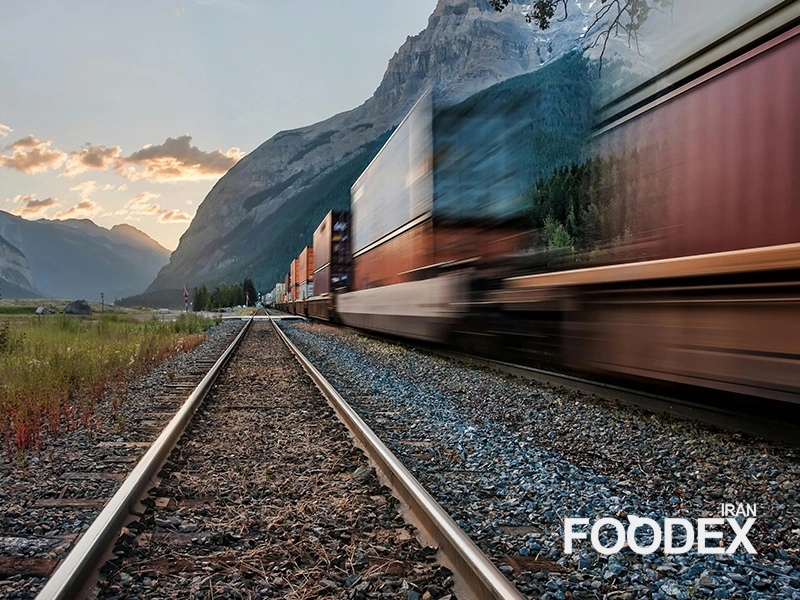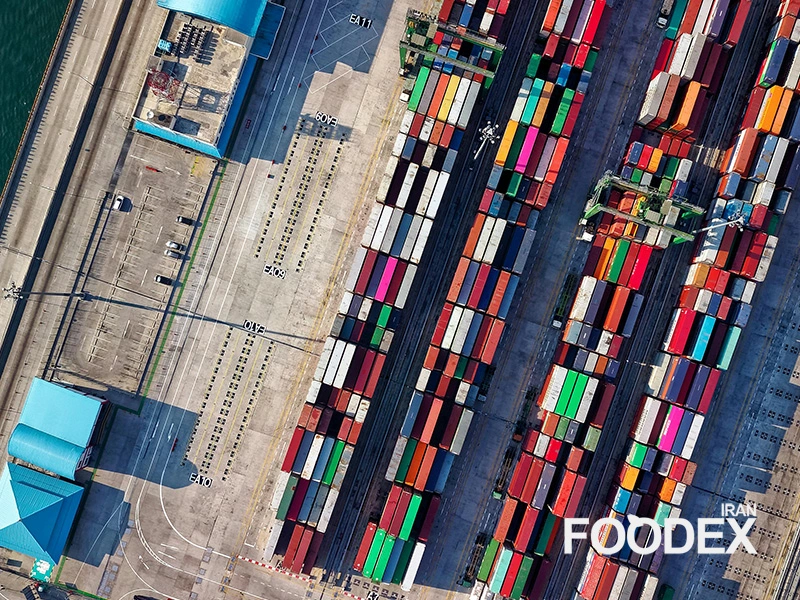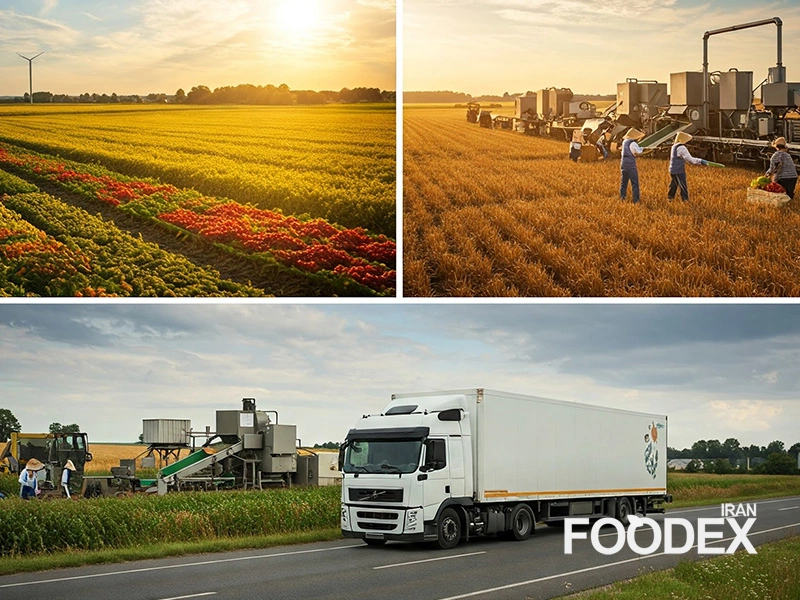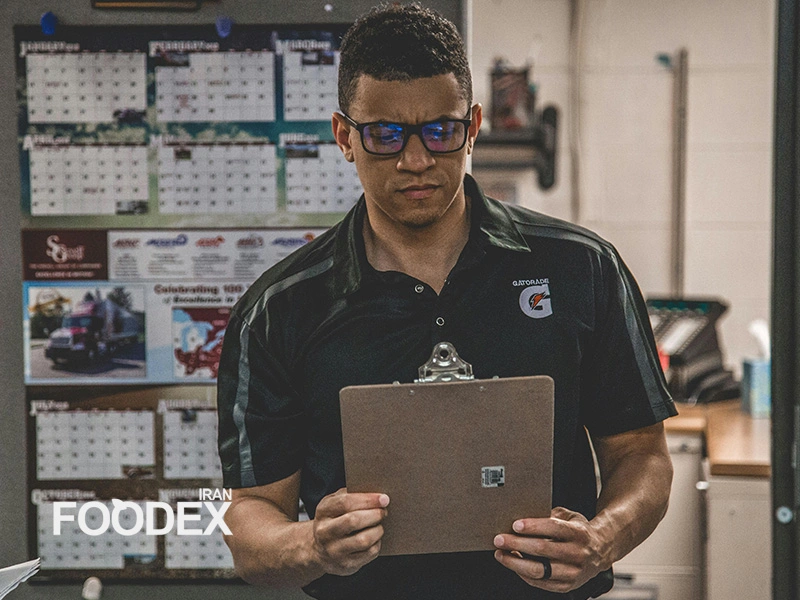The fundamental supply chain structure depends on transportation since it enables the movement of materials and products from suppliers to manufacturers and customers. Operating products through an inefficient transportation system would cause delayed delivery and higher distribution costs.
Modern society depends on transportation for two main purposes: managing product logistics between business entities and reducing operational costs and accelerating delivery times while boosting business effectiveness and customer contentment.
This Foodex magazine article examines transportation definitions, multiple formats, and their applicable methods.
Transportation
Transportation can relocate people, materials, and information from their original points to destination locations. Organizations at every level, from local to international, conduct transportation operations through land transportation systems, sea transport, air transport, and digital transport methods.
The supply chain transportation process includes moving raw materials between suppliers and factories, goods between manufacturers and warehouses, and final products between customers. Maintaining this process requires the lowest possible costs and the shortest possible completion time while ensuring maximum precision and database security.
Key Features of Transportation
Movement of goods and individuals across different geographical locations
The process unites multiple supply chain departments through interconnections
Direct impact on costs, quality, and delivery time of goods
A crucial factor in the development of domestic and international trade
Categories of Transportation
The transportation industry divides itself into domestic and international transportation systems.
Domestic Transportation
The internal boundaries of a country constitute domestic transportation through its borders. The movement of factory products from Tehran to the Mashhad store falls under this category. Trucks, trains, and local vehicles make up the typical modes of transport within national borders.
International Transportation
Shipping goods occurs when countries operate as transportation endpoints beyond their national borders. All types of transportation that combine maritime with air elements, including rail transport and international road transport, fall under this category. During international trades of Iranian honey to Europe, the transportation activities qualify as international operations.
Modes of Transportation
Two main categories define transportation, which depend on vehicle type and selected routes. The selection of the appropriate transportation mode relies on the combination of the nature of goods and features such as expense and delivery time alongside geographical location factors.
Road Transportation
Road transportation employs trucks, vans, and motorcycles. Many businesses select door-to-door delivery through road transportation because it remains the most popular method for local deliveries between medium-range distances.
Advantages
Flexibility in delivery routes
Cost-effective for short to medium distances
Suitable for perishable goods and time-sensitive deliveries
Disadvantages
This method becomes expensive for travels that extend beyond short distances.
Dependent on road conditions and traffic congestion
Dairy products in Iran reach different cities through refrigerated trucks for distribution.
Rail Transportation
Trains through the rail system offer the best option to move big and substantial items.
Advantages
Transportation costs for trains remain lower than those for roads when applied to lengthy routes.
The reduced usage of fuel leads to less environmental impact.
Disadvantages
The flexibility available to road transport methods surpasses this form of transport.
Requires advanced railway infrastructure
A freight train transports wheat between flour mills and ports.
Maritime Transportation
The shipping industry uses vehicle fleets consisting of container ships, oil tankers, and traditional cargo vessels. Long-distance shipment of large cargo volumes remains the most economical transportation choice.
Advantages
Long-distance international transportation needs this method for the best economic value.
Air transportation handles both large cargo quantities and heavy freight loads.
Disadvantages
Transporting goods through maritime routes takes more time than air shipment methods.
Dependent on weather conditions and trade restrictions
For example, Saffron and pistachios from Iran reached Europe through cargo ships.
Air Transportation
Cargo shipping through aircraft is the fastest available method of air transportation. This method most benefits perishable items, electronic devices, and valuable products.
Advantages
The delivery times using this method prove to be the shortest among all modes of transport.
Higher security for valuable and sensitive goods
Disadvantages
The most expensive mode of transportation
Limited capacity for cargo weight and volume
Example: Urgent delivery of pharmaceuticals and medical vaccines to different countries.
Multimodal Transportation
Using multiple forms of transportation for delivery lets companies achieve more economical shipping combined with expedited transit times.
Advantages
Companies achieve cost reductions through the merging of inexpensive and fast transportation methods.
Cargo shipping becomes possible for areas not efficiently served by individual transport methods.
Offers higher flexibility
Disadvantages
Requires complex management and coordination
A truck transports Iranian tea to Bandar Abbas, then to Dubai, before ending in European airspace.
Comparison of Different Transportation Methods
| Limitations | Suitable for | Speed | Cost | Mode of Transportation |
| Traffic, fuel costs | Short to medium distances | Medium | Medium | Road |
| Requires rail infrastructure | Heavy and bulky goods | Medium | Low | Rail |
| Long delivery times | Import and export | Slow | Low | Maritime |
| High cost, weight, and volume limitations | High-value and perishable goods | Fast | High | Air |
| Requires high coordination | Combining the advantages of multiple methods | Variable | Medium | Multimodal |
Role and Importance of Transportation in the Supply Chain
The supply chain relies on transportation as its foundational element while performing the following sequence:
The selection of air, sea, or land transportation is the first supply chain operation.
Future routes are developed to find cheaper options and faster delivery methods.
The assessment and management of transportation service providers become part of the responsibilities.
Overseeing warehousing and distribution operations
Why is Transportation Important?
1- Timely Delivery of Goods and Increased Customer Satisfaction: Consumers demand their purchased goods to reach them without unnecessary postponements. Minimising delays together with accurate delivery while enhancing customer service are all benefits possible through efficient transportation.
2- Reducing Supply Chain Operational Costs: Transportation expenses make up the majority of supply chain costs, comprising fuel costs, freight charges, and warehousing expenses. Improved transportation route planning, together with more effective transport methods, leads to decreased supply chain expenses.
3- Integration Within the Supply Chain and Better Connectivity Between Suppliers, Manufacturers, and Customers: Every part of the supply chain requires transportation to establish links between all sections. Supply chain process efficiency improves when suppliers coordinate with manufacturers and their distributors.
4- Expanding Access to New Markets: An efficient transportation system provides companies access to domestic and international markets and helps them attract new customers for sales expansion.
Transportation Strategies
The supply chain component known as transportation is vital because it shapes company performance and delivery times, operating efficiency and costs, and customer satisfaction. Companies utilize strategic transportation models to make excellent choices about their transportation methods, route administration, cost minimization, and supply chain management coordination. This section analyzes the key strategic transportation models of supply chain management, their unique features, and suitable industry applications.
Centralized Transportation Model
The single location manages every transportation decision within this model. The centralized network is the hub for controlling orders and inventory and employing transportation methods with a single unified decision-making authority.
Characteristics of the Centralized Transportation Model
The transportation operation management takes place through a single unified control station.
Smaller transportation routes become efficient because the system directs them to operate from a main hub location.
Reduces administrative and operational costs
Advantages
Cost reduction through shipment consolidation
Increased transparency and coordination in transportation operations
Better scheduling and reduced delivery times
Disadvantages
The system needs a powerful supporting foundation and advanced smart transportation control methods.
The model decreases the potential for fast adjustments to demand changes
Application of the Centralized Transportation Model
Through centralized transportation operations, Amazon, Walmart, and other major companies have reduced costs and improved operational efficiency.
Decentralized Transportation Model
Under this model, every section of the supply chain operates its transportation separately. The decision-making process focuses on different operational levels that maintain proximity to transportation activities.
Characteristics of the Decentralized Transportation Model
Facilities and warehouses keep full authority to organize their transportation systems individually.
The supply chain requires fewer complex communications among different centers to function.
The model supports better adjustment to market instability alongside customer order modifications.
Advantages
The decentralized model provides rapid adjustments to both market modifications and shipping issues.
More efficient management of different regions
Distribution operations become independent of sole reliance on a central transportation location.
Disadvantages
The absence of integration entails elevated administrative expenditures.
Communication problems may arise between separate operational centers
Application of the Decentralized Transportation Model
The decentralized transportation model suits Coca-Cola and Pepsi because each regional facility possesses the power to handle its inventory while enhancing localized supply chain logistics.
3PL Logistic’s Role in Developing the Global Food Supply Chain
Learn MoreDemand-Driven Transportation Model
The model changes transport operations to match consumer requests through a system that generates real-time, market-specific decisions.
Characteristics of the Demand-Driven Transportation Model
Route and transportation planning happens through current information analysis and consumer demand prediction.
The company sends shipments directly due to actual customer order requirements.
The model combines AI with machine learning technology to process data efficiently.
Advantages
The model decreases waste in inventory, which leads to reduced warehousing costs.
The model provides organizations with better adaptation to market-related fluctuations.
This strategy helps companies minimize their fuel bills and transportation costs.
Disadvantages
The implementation needs sophisticated data processing systems together with demand management software.
Highly dependent on the accuracy of received data
Application of the Demand-Driven Transportation Model
Amazon Prime and FedEx apply real-time demand analysis through a model-based system that enables fast customer order shipments.
Collaborative Transportation Model
The demand-driven transportation model requires different supply chain partners to join forces to optimize their logistics efficiency while reducing costs.
Characteristics of the Collaborative Transportation Model
Multiple companies benefit from joint shipping practices that maximize vehicle loading capacity.
Operations between multiple companies or suppliers achieve reduced transportation expenses by sharing resources.
Multiple companies create joint distribution systems to share their customer delivery operations.
Advantages
Lower transportation and warehousing costs
Better utilization of truck and vehicle capacity
The model helps decrease environmental pollution through decreased travel that goes beyond necessity.
Disadvantages
For success, you need an advanced level of organization between different companies.
Community members encounter difficulties in dividing and sharing expenses between one another.
Application of the Collaborative Transportation Model
Nestlé and Unilever, together with other food giants, deploy this model to reduce distribution expenses while making optimized joint market deliveries.
Sustainable Transportation Model
The Sustainable Transportation Model minimizes transportation’s environmental effects while providing companies with options to pick environmentally beneficial routes, cleaner fuel alternatives, and better operational efficiencies.
Characteristics of the Sustainable Transportation Model
Utilization of electric or hybrid vehicles
The company optimizes transportation routes to minimize fuel costs.
Transport organizations should implement multiple transportation systems to regulate carbon emissions.
Advantages
The model decreases both air pollution and fuel use during operations.
Implementing a green transportation strategy builds strong environmental social responsibility and draws environmentally focused customers to the brand.
Sustainable transportation methods can obtain financial rewards together with tax cuts.
Disadvantages
The startup costs needed for establishing sustainable transportation infrastructure remain high.
Long-term capital investment needs to be made before reaching financial returns.
Application of the Sustainable Transportation Model
The sustainable transportation strategy is adopted through the implementation of electric vehicles by Tesla alongside DHL.
The Role of Customer Service in the Supply Chain with a Focus on Transportation
Customer service in supply chain management includes every activity that addresses customer expectations management alongside accurate information delivery while solving delivery and transportation-related problems. Shipping services inside the supply chain create an essential link to customer care, which leads to specific delivery problems, causing decreased customer satisfaction and decreased customer loyalty.
Suppliers in the transportation sector need to focus on customer service standards, which are indispensable for their operations. Transportation services supported by customer service operations lead to better customer experiences, decrease complaints, strengthen competitive position, improve customer retention, and reduce operational expenses.
Enhancing Customer Experience Through On-Time Delivery
Customer satisfaction depends heavily on the time when their products reach them. When delays occur and tracking information proves faulty, customers are unsatisfied and lose trust in the brand. In today’s market, real-time updates about order status, together with delivery timing predictions, are normal expectations from customers.
Reducing Customer Issues and Complaints
Transportation management that is not properly handled produces problems, including untraceable packages, delayed shipments, and product destruction. A company retains its reputation alongside satisfied customers through immediate and honest customer support systems.
Increasing Customer Retention
When consumers experience positive interactions during transportation and delivery, they tend to choose brand purchases from their first choice. Order tracking enhancements, transparent assistance, and rapid issue resolution strengthen customer loyalty.
Through competitive advantage, brands establish themselves in the market
Many companies place transportation efficiency and post-sales service quality among their key attributes for market differentiation. Companies that provide swift and easy delivery services obtain competitive advantages against competitors. Establishing robust customer service mechanisms decreases expenses linked to return shipments and refund proceedings. Businesses affected by transportation faults face financial losses that demand both refund compensation and merchandise reshipment. A strong customer service system enables the reduction of these costs.
Key Differences Between Traditional Trade and Supermarkets
Learn MoreHow Customer Service Can Improve Transportation in the Supply Chain
Supply chain transportation receives improvements through customer service methods that include the following approaches:
Real-Time Tracking & Updates
The most crucial customer expectation relates to obtaining precise and current data about delivery times coupled with order status notifications.
Customers can see their order progress by integrating tracking systems incorporating GPS and RFID technology.
Amazon and the U.S. use this feature to show their customers real-time updates, thus decreasing their support requests.
Yadumer Shipping Solutions provides multiple delivery options customized to individual consumer requirements.
Customers display two distinct patterns when selecting between rapid service at a premium price and delayed shipment at a reduced cost.
Organizations allow customers to choose between multiple shipping options, which include:
Standard Delivery: This has a Lower cost but slower delivery
Express Delivery: This is Faster but more expensive
Users can set specific dates when they want their deliveries to be delivered.
The system provides alternative transportation paths to customers when traffic problems or time delays occur.
Customer Feedback Integration for Continuous Improvement
Organizing customer feedback on delivery precision, service quality, and shipping velocity enables businesses to enhance their logistic operations.
Example: Every delivery recipient requests Amazon to give ratings regarding their shipment speed and quality. The feedback enables organizations to improve delivery route operations and select better shipping partners, enhancing customer satisfaction.
Proactive Issue Resolution for Shipping Problems
Customers who face shipping problems with their orders require immediate and practical help with delivery problems and package delivery issues.
Solutions for Managing Shipping Issues
A specific team should be established for quick response to all transportation problems
The company provides two options for customers: free reshipment of lost items and promotional late delivery discounts.
Faster customer request processing happens through automated systems and chatbot implementation.
Cross-Department Collaboration for Better Customer Service
Customer service excellence requires coordinated team effort between sales, marketing, warehousing, and logistics members who create reliable and timely customer data sharing practices.
Examples: A system must inform customers about inventory shortages before they place their order requests.
During severe weather conditions that impact transportation, customer support must provide immediate notifications to the customers.
The Role of Supply Chain Analysts in Transportation and Customer Service
Social scientists specializing in supply chains serve as vital elements for transportation optimization and customer service enhancement using data analysis tools with modern technology.
Transportation Planning and Route Optimization
A detailed analysis of delivery times, shipping expenses, and vehicle passenger capacity enables the proper selection of the most effective delivery method.
Predictive analysis enables sausage makers to predict shipping delays, which helps them reduce transportation expenses.
Companies must analyze transportation providers and maximize efficiency by performing assessments.
The business evaluates its delivery partner evaluations according to three key elements: price, transportation speed, and cargo accuracy.
The team will present strategies for shipment consolidation that lower expenses.
The company tracks key performance indicators throughout the transportation and customer service departments.
Delivery time tracking and measurements of shipping precision and delay durations while monitoring customer satisfaction performances
The company will uncover operational inefficiencies through root-cause analysis to develop improved logistics procedures.
Order Management and Shipment Tracking
Order tracking tasks combined with time-sensitive final delivery completion
Additional services need to be provided to customers when delivery schedules face problems or when shipping situations occur.
The company strengthens coordination through team collaboration between Marketing and Sales units.
Business objectives will benefit from strategic shipping plans, which lead to better customer experience while increasing sales performance.
The Role of a Supply Chain Analyst in the Food and Beverage Industry
Learn MoreFinal Thoughts
Perhaps transportation, at first glance, seems like a straightforward link in the supply chain. But the routes goods take, the vehicles that carry them, and the systems that coordinate their movement are part of a much more intricate story, one that reflects how a business thinks, prioritizes, and responds. Every transport decision, whether a cost-saving consolidation, a real-time rerouting, or a customer-specific delivery option, sends a message. It reveals something about how we manage complexity, how we value time, and how deeply we understand the expectations of the market. There may not be one perfect model for transportation in supply chains. But perhaps the diversity of methods and strategies available isn’t a challenge to solve, it’s an opportunity to explore what matters most to each operation. The real question is not only how we move goods, but how we move with purpose.
Ehsan Allahverdi
Executive Manager of Foodex Iran
Marketing Consultant for Leading Food & Beverage Brands
website | linkedin


























